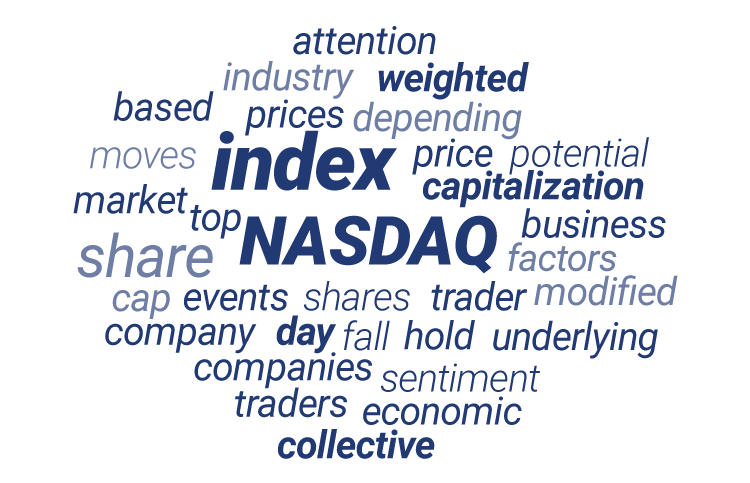What Moves the NASDAQ?
The Nasdaq 100 (US-Tech 100) is an index which follows the 100 largest non-financial companies traded on the Nasdaq Stock Market. They are chosen by the size of their market capitalization and given various weights on the index, depending on their size.
The price of the Index is ultimately affected by the same economic events that affect the share price of the stocks that make up the Index itself. Company profits, growth potential, the strength of the US dollar and news releases are just a few of the factors that traders normally consider when preparing to trade CFDs on US-Tech 100.
How is the Nasdaq 100 Calculated?
Working as a modified market-capitalization weighted index, the Nasdaq 100 gives about 54.6% (as of November 2020) of the index’s value to the 10 largest member companies. Over the last 20 years, these top positions have been dominated by the technology sector, which has grown at a faster pace than any other sector.
This weighting process limits the influence of its composite’s top companies, which differentiates the Nasdaq100 from classic market capitalization indices, such as the S&P 500 or FTSE100 (UK100), or price-weighted indices, such as the Dow Jones Industrial Average (US 30 - Wall Street).

What Moves the Nasdaq 100 Index?
There are various factors that can move the Nasdaq 100.
Share Price
The weight given to each company included in the Nasdaq100 influences how the individual share price moves the overall index. The index is a weighted collective of share prices; in general, rising share prices will increase the value of the index and falling share prices will reduce it. It is important to remember that with the Nasdaq100, company shares are weighted differently depending on their market cap.
For example, if the share prices of Apple, Microsoft, and Amazon all rise in one day, their influence on the Nasdaq100 overall may push the index’s value higher, because usually these three companies hold the most weight. At the same time, if every other company’s shares fall on that same day, it is possible for the value of the index to drop, as it is based on the collective valuation of the underlying shares.
Trader Sentiment
Trader sentiment impacts the Nasdaq 100 by influencing the values of the underlying shares. This trader attention causes the underlying share prices inside the Nasdaq 100 to possibly change. Share prices can also climb following an announcement of quarterly earnings or projected growth due to an unexpected outcome.
Major buying or selling of shares of any given company can be enough to move the price as it grabs the attention of more traders. As the underlying assets begin to move, so too does the value of the index.
Being a weighted index, a significant rise or fall of the share price of only one of the top 10 companies can potentially move the price of the whole index.
Political Events
Political events have the potential to help or hurt business activity. A new policy may hold the potential to impact an industry’s ability to perform business, which could impact on the whole index, should its component companies be concentrated within the said industry.
For example, if the United States government suddenly declares that US-based companies can no longer sell their goods to a foreign country, it may negatively impact share prices throughout an industry.
There are many forces that impact the Nasdaq 100 and the companies that are listed on it. Profit, trader sentiment, economic strength, as well as other factors, all have the potential to move the price of this modified market-capitalization weighted index.
It is crucial for traders to remain aware of stock movements and global news so they can keep their finger on the pulse of the market.
